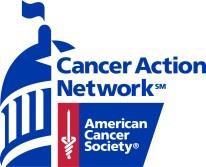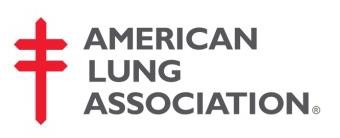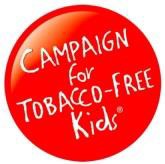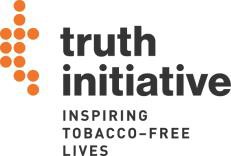Public comments and response
B2_Public comments and CDC responses to the NYTS 60-day FRN.docx
National Youth Tobacco Surveys (NYTS) 2015-2017
Public comments and response
OMB: 0920-0621
ATTACHMENT B2
Comments in Response to the 60-day Federal Register Notice and Efforts to Consult Outside of the Agency
NYTS OMB No. 0920-0621 Public comments
Document Details
![]() Docket
ID: CDC-2017-0092
Docket
ID: CDC-2017-0092
![]() Docket
Title: National
Youth Tobacco Surveys (NYTS) 2018-2020
Docket
Title: National
Youth Tobacco Surveys (NYTS) 2018-2020
Document File:  Docket Phase: Notice
Docket Phase: Notice
Phase Sequence: 1
Original Document ID: CDC-2017-0092-DRAFT-0003
Current Document ID: CDC-2017-0092-0003
![]() Title: Comment
from (Anonymous Anonymous)
Title: Comment
from (Anonymous Anonymous)
Number of Attachments: 0
![]() Document
Type: PUBLIC
SUBMISSIONS
Document
Type: PUBLIC
SUBMISSIONS
 Document
Subtype:
Document
Subtype:
![]() Comment
on Document ID: CDC-2017-0092-0001
Comment
on Document ID: CDC-2017-0092-0001
Comment on Document Title: National Youth Tobacco Surveys (NYTS) 2018-2020 Federal
![]() Register,
Volume 82 Issue 197 (Friday, October 13, 2017)
Register,
Volume 82 Issue 197 (Friday, October 13, 2017)
![]() Status: Posted
Status: Posted
![]() Received
Date: 10/26/2017
Received
Date: 10/26/2017
![]() Date
Posted: 10/27/2017
Date
Posted: 10/27/2017
![]() Posting
Restriction: No
restrictions
Posting
Restriction: No
restrictions
Submission Type: Web
![]() Number
of Submissions: 1
Number
of Submissions: 1
Document Optional Details
Status Set Date: 10/27/2017
Current Assignee: NA
Status Set By: Burroughs-Stokes, Kennya LaTrice (CDC)
![]() Comment
Start Date: 10/16/2017
Comment
Start Date: 10/16/2017
![]() Comment
Due Date: 12/12/2017
Comment
Due Date: 12/12/2017
![]() Tracking
Number: 1k1-8zfw-guid
Tracking
Number: 1k1-8zfw-guid
 Page
Count: 1
Page
Count: 1
Total Page Count 1
Including Attachments:
Submitter Info
Comment: FDA, As I finish reading Altria's earning call transcript today it gives me great hope that they also see the urgency to lower nicotine in tobacco to save the lives of children today
![]() and
generations to come due to addiction. As a health educator I have
been very intrigued by 22nd century and amazed that they and you have
the power to stop addiction today! I applaud Altria for wanting to do
the same, and I hope this will be a joint effort by all parties
sooner rather than later to end premature deaths among are youth due
to nicotine addiction in cigarettes. Thank you!!!!
and
generations to come due to addiction. As a health educator I have
been very intrigued by 22nd century and amazed that they and you have
the power to stop addiction today! I applaud Altria for wanting to do
the same, and I hope this will be a joint effort by all parties
sooner rather than later to end premature deaths among are youth due
to nicotine addiction in cigarettes. Thank you!!!!
![]() First
Name: Anonymous
First
Name: Anonymous
![]() Last
Name: Anonymous
Last
Name: Anonymous

 ZIP/Postal
Code: Email Address: Organization Name: Cover Page:
ZIP/Postal
Code: Email Address: Organization Name: Cover Page:
Document Details
![]() Docket
ID: CDC-2017-0092
Docket
ID: CDC-2017-0092
![]() Docket
Title: National
Youth Tobacco Surveys (NYTS) 2018-2020
Docket
Title: National
Youth Tobacco Surveys (NYTS) 2018-2020
Document File:  Docket Phase: Notice
Docket Phase: Notice
Phase Sequence: 1
Original Document ID: CDC-2017-0092-DRAFT-0004
Current Document ID: CDC-2017-0092-0004
![]() Title: Comment
from (Anonymous Anonymous)
Title: Comment
from (Anonymous Anonymous)
Number of Attachments: 0
![]() Document
Type: PUBLIC
SUBMISSIONS
Document
Type: PUBLIC
SUBMISSIONS
 Document
Subtype:
Document
Subtype:
![]() Comment
on Document ID: CDC-2017-0092-0002
Comment
on Document ID: CDC-2017-0092-0002
![]() Comment
on Document Title: National
Youth Tobacco Surveys (NYTS) 2018-2020 2017-22202
Comment
on Document Title: National
Youth Tobacco Surveys (NYTS) 2018-2020 2017-22202
![]() Status: Posted
Status: Posted
![]() Received
Date: 10/26/2017
Received
Date: 10/26/2017
![]() Date
Posted: 10/27/2017
Date
Posted: 10/27/2017
![]() Posting
Restriction: No
restrictions
Posting
Restriction: No
restrictions
Submission Type: Web
![]() Number
of Submissions: 1
Number
of Submissions: 1
Document Optional Details
Status Set Date: 10/27/2017
Current Assignee: NA
Status Set By: Burroughs-Stokes, Kennya LaTrice (CDC)
![]() Comment
Start Date: 10/16/2017
Comment
Start Date: 10/16/2017
![]() Comment
Due Date: 12/12/2017
Comment
Due Date: 12/12/2017
![]() Tracking
Number: 1k1-8zfw-lqod
Tracking
Number: 1k1-8zfw-lqod
 Page
Count: 1
Page
Count: 1
Total Page Count 1
Including Attachments:
Submitter Info
Comment: FDA, As you know 1 in 5 deaths annually or 1,300 deaths every day die due to cigarette smoking. You have the science and the power to make these statistics disappear! Please, do not waste another day, month or year to put low nicotine in cigarette's.
The children who can't stick up for themselves due to second hand smoke, or peer pressure and/or environmental reasons you can impact their lives by being their voice and ending the key ingredient in the addiction of smoking which is the nicotine.
![]() To
a healthy tomorrow!!
To
a healthy tomorrow!!
![]() First
Name: Anonymous
First
Name: Anonymous
![]() Last
Name: Anonymous
Last
Name: Anonymous

 ZIP/Postal
Code: Email Address: Organization Name: Cover Page:
ZIP/Postal
Code: Email Address: Organization Name: Cover Page:





December 8, 2017
Leroy A. Richardson
Information Collection Review Office Centers for Disease Control and Prevention 1600 Clifton Road NE., MS-D74
Atlanta, Georgia 30329
RE: National Youth Tobacco Survey (Docket No. CDC–2017–0092) Dear Mr. Richardson:
We, the undersigned organizations, are writing to express our strong support for the continuation of the National Youth Tobacco Survey (NYTS), a national school-based survey of middle and high school students. The NYTS is a long-running, comprehensive source of accurate and reliable information on a number of tobacco-related topics for youth, including the prevalence of use of cigarettes, cigars, smokeless tobacco, electronic cigarettes (e-cigarettes), hookahs, pipes, bidis, snus, and dissolvable tobacco; knowledge and attitudes about tobacco use; exposure to tobacco industry advertising; access to tobacco products and enforcement of youth access restrictions; and secondhand smoke exposure.
The importance of having an annual, school-based national survey that focuses exclusively on tobacco cannot be understated. NYTS data, which are consistently reported in a timely manner by the CDC, are used to help guide the development of programs and policies used to address tobacco use, the number one cause of preventable death in the United States. The NYTS plays a vital role in enabling and empowering administrative health agencies, public health organizations, as well as law enforcement and government officials to address tobacco use in their communities. Specifically, the information provided by NYTS allows public health practitioners and government officials to:
Identify racial and ethnic disparities in tobacco use, exposure to secondhand smoke, access to tobacco products, and beliefs about quitting.
Develop well-informed and relevant youth prevention and cessation programs.
Evaluate tobacco control programs using evidence-based indicators.
Identify trends in youth tobacco use and minors’ access to tobacco products.
Identify and address misperceptions about the dangers of tobacco use and the benefits of quitting.
The current environment in tobacco control is a particularly critical one for continuing this important data collection. With so much activity happening in terms of tobacco policy change and tobacco industry product innovation and marketing, it is essential that we have data collected in the rigorous fashion employed by NYTS to inform our efforts as we work to reduce tobacco use. For example, the NYTS was the first national survey to document the dramatic growth in youth use of e-cigarettes, highlighting the need for interventions to prevent youth initiation of these novel tobacco products. Access to this information is necessary to inform policy and research priorities, particularly given the regulatory authority that the FDA now has over tobacco products, including new products like e-cigarettes.
We appreciate the opportunity to respond to the CDC’s request for comments and look forward to seeing future NYTS reports. Thank you for your ongoing work on this important survey.
Respectfully submitted,
American Cancer Society Cancer Action Network American Heart Association
American Lung Association Campaign for Tobacco-Free Kids Truth Initiative

 December
11, 2017
December
11, 2017
Leroy A. Richardson
Information Collection Review Office Centers for Disease Control and Prevention 1600 Clifton Road NE
MS-D74
Atlanta, GA 30329
RE: National Youth Tobacco Surveys (NYTS) 2018-2020 (OMB Control Number 0920-0621, expires 01/31/2018)— Revision—National Center for Chronic Disease Prevention and Health Promotion (NCCDPHP), Centers for Disease Control and Prevention (CDC).
Docket No. CDC-2017-0092
Dear Mr. Richardson:
Truth Initiative welcomes the opportunity to submit comment regarding the National Youth Tobacco Surveys (NYTS) 2018-2020. Truth Initiative has a long history with the NYTS and applauds the goals of NYTS regarding monitoring tobacco use trends among youth as tobacco use remains the leading cause of preventable death and disease in the United States. This research is vital for informing policy and programs on tobacco control.
Truth Initiative is committed to creating a generation of Americans for whom tobacco use is a thing of the past. We believe each individual has the right to live in a world free from tobacco dependence, tobacco-related death and disease, and the devastating dollar cost to individuals and society. Truth Initiative’s proven-effective and nationally recognized public education programs include truth®, the national youth smoking prevention campaign that has been cited as contributing to significant declines in youth smoking; EX®, an innovative smoking cessation program; and research initiatives exploring the causes, consequences and approaches to reducing tobacco use. Truth Initiative also develops programs to address the health effects of tobacco use – with a focus on priority populations disproportionately affected by the toll of tobacco – through alliances, youth activism, training and technical assistance. Located in Washington, DC, the organization was created as a result of the November 1998 Master Settlement Agreement (MSA) between attorneys general from 46 states, five
 U.S.
territories and the tobacco industry.
U.S.
territories and the tobacco industry.
Truth Initiative has signed on to joint comments submitted by a number of leading public health organizations. While we agree with these comments, there are suggestions for the NYTS that Truth Initiative would like to recommend.
Truth Initiative recommends that the questions about cigar use be separated into the following categories: large cigars and cigarillos/little cigars.
Currently, the NYTS asks about the use of cigars, cigarillos, or little cigars together as one category. Because the users and the usage patterns appear to vary across the different types of cigars, Truth Initiative encourages CDC to ask questions in the NYTS about typical large, traditional cigars, sometimes referred to as “stogies,” separately from the questions about little cigars or cigarillos. Research suggests large cigar users and little cigar and cigarillo users have different demographic profiles and may have different patterns of multiple product use, with little cigars and cigarillos being more popular among young adults, African-Americans, individuals with lower education and those reporting current cigarette, marijuana and blunt use.1-3 In July 2017, FDA announced that it intends to issue an ANPRM to solicit additional comments and scientific data related to the patterns of use and resulting public health impacts from premium cigars. It would be beneficial for FDA to have data from the NYTS in order to make a determine how to regulate this tobacco product category.
Truth Initiative also recommends that JUUL be added as a brand example for electronic cigarettes.
Currently, the NYTS states the following: “The next 11 questions are about electronic cigarettes or e-cigarettes. E-cigarettes are battery powered devices that usually contain a nicotine-based liquid that is vaporized and inhaled. You may also know them as e-cigs, vape-pens, hookah-pens, e-hookahs, e-cigars, e-pipes, personal vaporizers, or mods.
Some brand examples include NJOY, Blu, Vuse, MarkTen, Logic, Vapin Plus, eGo, and Halo.”
Truth Initiative recommends that JUUL be added as a brand example. There is evidence that youth are using this brand of electronic cigarettes and referring to it as “Juuling”.4-6 As the Boston Globe article states, “Although many parents have never, or only recently, heard of Juuling, every student approached by a Globe reporter in multiple suburbs not only was familiar with the product, but had a story.” Because the landscape of the category of electronic cigarettes is still rapidly changing, it is important that CDC use terms that the NYTS population is familiar with in order to have data that best reflects U.S. youth tobacco product prevalence rates.
Truth Initiative appreciates CDC taking these comments into account as it develops the NYTS for the period of 2018-2020. Data from the NYTS is valuable to Truth Initiative as we examine trends in the use of different tobacco products among youth in the U.S.
Please do not hesitate to contact Maham Akbar, Public Policy Manager at [email protected] or 202-454-5932, should you need more information or have questions about this submission.
Sincerely,
![]()
M. David Dobbins Chief Operating Officer
References
Cullen J, Mowery P, Delnevo C, et al. Seven-year patterns in US cigar use epidemiology among young adults aged 18-25 years: a focus on race/ethnicity and brand. American journal of public health. 2011;101(10):1955-1962.
Borawski EA, Brooks A, Colabianchi N, et al. Adult use of cigars, little cigars, and cigarillos in Cuyahoga County, Ohio: a cross-sectional study. Nicotine & tobacco research : official journal of the Society for Research on Nicotine and Tobacco. 2010;12(6):669-673.
Richardson A, Rath J, Ganz O, Xiao H, Vallone D. Primary and dual users of little cigars/cigarillos and large cigars: demographic and tobacco use profiles. Nicotine & tobacco research : official journal of the Society for Research on Nicotine and Tobacco. 2013;15(10):1729-1736.
Globe B. 'Juuling': The most widespread phenomenon you've never heard of. November 16, 2017; https://www.bostonglobe.com/metro/2017/11/15/where- teenagers-are-high-school-bathrooms- vaping/IJ6xYWWlOTKqsUGTTlw4UO/story.html.
Melink L. C.O. high schoolers get hooked on popular e-cigarette. November 3, 2017; http://www.ktvz.com/news/co-high-schoolers-get-hooked-on-popular-e- cigarette/651522055.
NPR. Teenagers Embrace JUUL, Saying It's Discreet Enough To Vape In Class. 2017; https://www.npr.org/sections/health-shots/2017/12/04/568273801/teenagers- embrace-juul-saying-its-discreet-enough-to-vape-in-class.
Comments in Response to the Federal Register Notice and Efforts to Consult Outside of the Agency
A 60-day Federal Register Notice was published in the Federal Register on October 13, 2017, Docket No. CDC-2017-0092, Document Citation 82FR 47740, Pages 47740-47741 (2 pages). CDC received and responded to 4 unique public comments that were related to this notice from both individuals and organizations that are outside of CDC. Within those 4 unique sets of comments, CDC responded to 5 unique questions/comments. The table below summarizes the public comments and how CDC plans to address them:
Standards Area /
Topic |
Description |
Comment |
Response |
Nicotine addiction |
The commenter did not specifically comment on the Information Collection Request in this federal register notice for the National Youth Tobacco Survey. The commenter made a general statement about the urgency of lowering nicotine in tobacco to reduce nicotine addiction among youth. |
“FDA, As I finish reading Altria's earning call transcript today it gives me great hope that they also see the urgency to lower nicotine in tobacco to save the lives of children today and generations to come due to addiction. As a health educator, I have been very intrigued by 22nd century and amazed that they and you have the power to stop addiction today! I applaud Altria for wanting to do the same, and I hope this will be a joint effort by all parties sooner rather than later to end premature deaths among are youth due to nicotine addiction in cigarettes. Thank you!!!!”
|
No change to survey was proposed in this comment. CDC will make no change. |
Nicotine |
The commenter did not specifically comment on the Information Collection Request in this federal register notice for the National Youth Tobacco Survey. The commenter made a general statement to the FDA about ending nicotine addiction by ending nicotine, the key ingredient in tobacco. |
FDA, As you know 1 in 5 deaths annually or 1,300 deaths every day die due to cigarette smoking. You have the science and the power to make these statistics disappear! Please, do not waste another day, month or year to put low nicotine in cigarette's. The children who can't stick up for themselves due to second hand smoke, or peer pressure and/or environmental reasons you can impact their lives by being their voice and ending the key ingredient in the addiction of smoking which is the nicotine. To a healthy tomorrow!!
|
No change to survey was proposed in this comment. CDC will make no change. |
Letter of support from Organizations outside of CDC |
Letter of support about the importance of the National Youth Tobacco Survey(NYTS) for guiding the development of programs and policies that address tobacco use and how the NYTS data play a vital role in enabling and empowering administrative health agencies, public health organizations, as well as law enforcement and government officials to address tobacco use in their communities. |
December 8, 2017
Leroy A. Richardson Information Collection Review Office Centers for Disease Control and Prevention 1600 Clifton Road NE., MS-D74 Atlanta, Georgia 30329
RE: National Youth Tobacco Survey (Docket No. CDC–2017–0092)
Dear Mr. Richardson:
We, the undersigned organizations, are writing to express our strong support for the continuation of the National Youth Tobacco Survey (NYTS), a national school-based survey of middle and high school students. The NYTS is a long-running, comprehensive source of accurate and reliable information on a number of tobacco-related topics for youth, including the prevalence of use of cigarettes, cigars, smokeless tobacco, electronic cigarettes (e-cigarettes), hookahs, pipes, bidis, snus, and dissolvable tobacco; knowledge and attitudes about tobacco use; exposure to tobacco industry advertising; access to tobacco products and enforcement of youth access restrictions; and secondhand smoke exposure.
The importance of having an annual, school-based national survey that focuses exclusively on tobacco cannot be understated. NYTS data, which are consistently reported in a timely manner by the CDC, are used to help guide the development of programs and policies used to address tobacco use, the number one cause of preventable death in the United States. The NYTS plays a vital role in enabling and empowering administrative health agencies, public health organizations, as well as law enforcement and government officials to address tobacco use in their communities. Specifically, the information provided by NYTS allows public health practitioners and government officials to:
The current environment in tobacco control is a particularly critical one for continuing this important data collection. With so much activity happening in terms of tobacco policy change and tobacco industry product innovation and marketing, it is essential that we have data collected in the rigorous fashion employed by NYTS to inform our efforts as we work to reduce tobacco use. For example, the NYTS was the first national survey to document the dramatic growth in youth use of e-cigarettes, highlighting the need for interventions to prevent youth initiation of these novel tobacco products. Access to this information is necessary to inform policy and research priorities, particularly given the regulatory authority that the FDA now has over tobacco products, including new products like e-cigarettes.
We appreciate the opportunity to respond to the CDC’s request for comments and look forward to seeing future NYTS reports. Thank you for your ongoing work on this important survey.
Respectfully submitted,
American Cancer Society Cancer Action Network American Heart Association American Lung Association Campaign for Tobacco-Free Kids Truth Initiative
|
No change to survey was proposed in this comment. CDC will make no change. |
Survey items about cigars and e-cigarette brands |
a) Currently, the NYTS asks about the use of cigars, cigarillos, or little cigars together as one category.
Truth Initiative recommends that the questions about cigar use be separated into the following categories: large cigars and cigarillos/little cigars.
b) Currently, the NYTS states the following: “The next 11 questions are about electronic cigarettes or e-cigarettes. E-cigarettes are battery powered devices that usually contain a nicotine-based liquid that is vaporized and inhaled. You may also know them as e-cigs, vape-pens, hookah-pens, e-hookahs, e-cigars, e-pipes, personal vaporizers, or mods. Some brand examples include NJOY, Blu, Vuse, MarkTen, Logic, Vapin Plus, eGo, and Halo.”
Truth Initiative recommends that JUUL be added as a brand example.
|
December 11, 2017
Leroy A. Richardson Information Collection Review Office Centers for Disease Control and Prevention 1600 Clifton Road NE MS-D74 Atlanta, GA 30329
RE: National Youth Tobacco Surveys (NYTS) 2018-2020 (OMB Control Number 0920-0621, expires 01/31/2018)—Revision—National Center for Chronic Disease Prevention and Health Promotion (NCCDPHP), Centers for Disease Control and Prevention (CDC). Docket No. CDC-2017-0092
Dear Mr. Richardson:
Truth Initiative welcomes the opportunity to submit comment regarding the National Youth Tobacco Surveys (NYTS) 2018-2020. Truth Initiative has a long history with the NYTS and applauds the goals of NYTS regarding monitoring tobacco use trends among youth as tobacco use remains the leading cause of preventable death and disease in the United States. This research is vital for informing policy and programs on tobacco control.
Truth Initiative is committed to creating a generation of Americans for whom tobacco use is a thing of the past. We believe each individual has the right to live in a world free from tobacco dependence, tobacco-related death and disease, and the devastating dollar cost to individuals and society. Truth Initiative’s proven-effective and nationally recognized public education programs include truth®, the national youth smoking prevention campaign that has been cited as contributing to significant declines in youth smoking; EX®, an innovative smoking cessation program; and research initiatives exploring the causes, consequences and approaches to reducing tobacco use. Truth Initiative also develops programs to address the health effects of tobacco use – with a focus on priority populations disproportionately affected by the toll of tobacco – through alliances, youth activism, training and technical assistance. Located in Washington, DC, the organization was created as a result of the November 1998 Master Settlement Agreement (MSA) between attorneys general from 46 states, five U.S. territories and the tobacco industry.
Truth Initiative has signed on to joint comments submitted by a number of leading public health organizations. While we agree with these comments, there are suggestions for the NYTS that Truth Initiative would like to recommend.
Truth Initiative recommends that the questions about cigar use be separated into the following categories: large cigars and cigarillos/little cigars.
Currently, the NYTS asks about the use of cigars, cigarillos, or little cigars together as one category. Because the users and the usage patterns appear to vary across the different types of cigars, Truth Initiative encourages CDC to ask questions in the NYTS about typical large, traditional cigars, sometimes referred to as “stogies,” separately from the questions about little cigars or cigarillos. Research suggests large cigar users and little cigar and cigarillo users have different demographic profiles and may have different patterns of multiple product use, with little cigars and cigarillos being more popular among young adults, African-Americans, individuals with lower education and those reporting current cigarette, marijuana and blunt use.1-3 In July 2017, FDA announced that it intends to issue an ANPRM to solicit additional comments and scientific data related to the patterns of use and resulting public health impacts from premium cigars. It would be beneficial for FDA to have data from the NYTS in order to make a determine how to regulate this tobacco product category.
Truth Initiative also recommends that JUUL be added as a brand example for electronic cigarettes.
Currently, the NYTS states the following: “The next 11 questions are about electronic cigarettes or e-cigarettes. E-cigarettes are battery powered devices that usually contain a nicotine-based liquid that is vaporized and inhaled. You may also know them as e-cigs, vape-pens, hookah-pens, e-hookahs, e-cigars, e-pipes, personal vaporizers, or mods. Some brand examples include NJOY, Blu, Vuse, MarkTen, Logic, Vapin Plus, eGo, and Halo.”
Truth Initiative recommends that JUUL be added as a brand example. There is evidence that youth are using this brand of electronic cigarettes and referring to it as “Juuling”.4-6 As the Boston Globe article states, “Although many parents have never, or only recently, heard of Juuling, every student approached by a Globe reporter in multiple suburbs not only was familiar with the product, but had a story.” Because the landscape of the category of electronic cigarettes is still rapidly changing, it is important that CDC use terms that the NYTS population is familiar with in order to have data that best reflects U.S. youth tobacco product prevalence rates.
Truth Initiative appreciates CDC taking these comments into account as it develops the NYTS for the period of 2018-2020. Data from the NYTS is valuable to Truth Initiative as we examine trends in the use of different tobacco products among youth in the U.S.
Please do not hesitate to contact Maham Akbar, Public Policy Manager at [email protected] or 202-454-5932, should you need more information or have questions about this submission.
Sincerely, M. David Dobbins Chief Operating Officer
|
a) CDC and FDA will review and incorporate the suggestion in the next revision of the survey, which will be in 2019.
b) CDC and FDA will review and incorporate the suggestion in the next revision of the survey, which will be in 2019. |
| File Type | application/vnd.openxmlformats-officedocument.wordprocessingml.document |
| Author | Neff, Linda (CDC/ONDIEH/NCCDPHP) |
| File Modified | 0000-00-00 |
| File Created | 2021-01-20 |
© 2025 OMB.report | Privacy Policy